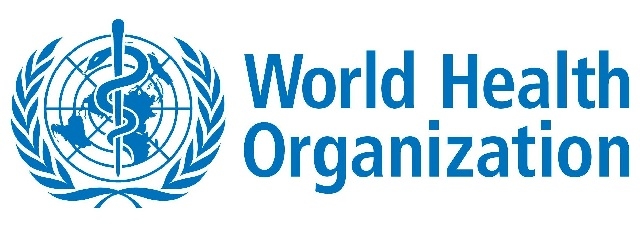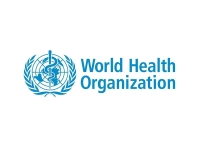Health
Updates to recommended treatment for sexually transmitted infections
Growing antibiotic resistance forces

WORLD HEALTH ORGANIZATION
USPA NEWS -
New guidelines for the treatment of 3 common sexually transmitted infections (STIs) have been issued by WHO in response to the growing threat of antibiotic resistance. Chlamydia, gonorrhoea and syphilis are all caused by bacteria and are generally curable with antibiotics....
New guidelines for the treatment of 3 common sexually transmitted infections (STIs) have been issued by WHO in response to the growing threat of antibiotic resistance. Chlamydia, gonorrhoea and syphilis are all caused by bacteria and are generally curable with antibiotics. However, these STIs often go undiagnosed and are becoming more difficult to treat, with some antibiotics now failing as a result of misuse and overuse. It is estimated that, each year, 131 million people are infected with chlamydia, 78 million with gonorrhoea, and 5.6 million with syphilis.
Resistance of these STIs to the effect of antibiotics has increased rapidly in recent years and has reduced treatment options. Of the 3 STIs, gonorrhoea has developed the strongest resistance to antibiotics. Strains of multidrug-resistant gonorrhoea that do not respond to any available antibiotics have already been detected. Antibiotic resistance in chlamydia and syphilis, though less common, also exists, making prevention and prompt treatment critical.
When left undiagnosed and untreated, these STIs can result in serious complications and long-term health problems for women, such as pelvic inflammatory disease, ectopic pregnancy, and miscarriage, and untreated gonorrhoea and chlamydia can cause infertility in both men and women. Infection with chlamydia, gonorrhoea and syphilis can also increase a person´s risk of being infected with HIV two- to three-fold. An untreated STI in a pregnant woman increases the chances of stillbirth and newborn death.
'Chlamydia, gonorrhoea and syphilis are major public health problems worldwide, affecting millions of peoples' quality of life, causing serious illness and sometimes death. The new WHO guidelines reinforce the need to treat these STIs with the right antibiotic, at the right dose, and the right time to reduce their spread and improve sexual and reproductive health. To do that, national health services need to monitor the patterns of antibiotic resistance in these infections within their countries,' says Ian Askew, Director of Reproductive Health and Research, WHO.
The new recommendations are based on the latest available evidence on the most effective treatments for these 3 sexually transmitted infections.
- Gonorrhoea
Gonorrhoea is a common STI that can cause infection in the genitals, rectum, and throat. Antimicrobial resistance has appeared and expanded with every release of new classes of antibiotics for the treatment of gonorrhoea. Because of widespread resistance, older and cheaper antibiotics have lost their effectiveness in treatment of the infection.
- Gonorrhoea
Gonorrhoea is a common STI that can cause infection in the genitals, rectum, and throat. Antimicrobial resistance has appeared and expanded with every release of new classes of antibiotics for the treatment of gonorrhoea. Because of widespread resistance, older and cheaper antibiotics have lost their effectiveness in treatment of the infection.
WHO urges countries to update their national gonorrhoea treatment guidelines in response to the growing threat of antibiotic resistance. National health authorities should track the prevalence of resistance to different antibiotics in the strains of gonorrhoea circulating among their population. The new guideline calls on health authorities to advise doctors to prescribe whichever antibiotic would be most effective, based on local resistance patterns. The new WHO guidelines do not recommend quinolones (a class of antibiotic) for the treatment of gonorrhoea due to widespread high levels of resistance.
- Syphilis
Syphilis is spread by contact with a sore on the genitals, anus, rectum, lips or mouth, or from mother to child during pregnancy. If a pregnant woman has untreated syphilis and the infection is transmitted to the fetus, this often causes it to die. In 2012, mother-to-child transmission of syphilis resulted in an estimated 143 000 early fetal deaths or stillbirths, 62 000 neonatal deaths, and 44 000 babies being born preterm or with low-birth-weight.
Syphilis is spread by contact with a sore on the genitals, anus, rectum, lips or mouth, or from mother to child during pregnancy. If a pregnant woman has untreated syphilis and the infection is transmitted to the fetus, this often causes it to die. In 2012, mother-to-child transmission of syphilis resulted in an estimated 143 000 early fetal deaths or stillbirths, 62 000 neonatal deaths, and 44 000 babies being born preterm or with low-birth-weight.
To cure syphilis, the new WHO guidelines strongly recommend a single dose of benzathine penicillin ““ a form of the antibiotic that is injected by a doctor or nurse into the infected patient´s buttock or thigh muscle. This is the most effective treatment for syphilis, as it is more effective and cheaper than oral antibiotics.
Benzathine penicillin was recognized by the Sixty-ninth World Health Assembly in May 2016 as an essential medicine which has been in short supply for several years.
Benzathine penicillin was recognized by the Sixty-ninth World Health Assembly in May 2016 as an essential medicine which has been in short supply for several years.
Reports of stock outs have been received by WHO from antenatal care representatives and providers in countries with high burdens of syphilis from 3 WHO Regions. WHO is working with partners to identify countries with shortages and help monitor global availability of benzathine penicillin to close the gap between national needs and supply of the antibiotic.
- Chlamydia
Chlamydia is the most common bacterial STI and people with this infection are frequently co-infected with gonorrhoea. Symptoms of chlamydia include discharge and a burning feeling when urinating, but most people who are infected have no symptoms. Even when chlamydia is asymptomatic, it can damage the reproductive system.
- Chlamydia
Chlamydia is the most common bacterial STI and people with this infection are frequently co-infected with gonorrhoea. Symptoms of chlamydia include discharge and a burning feeling when urinating, but most people who are infected have no symptoms. Even when chlamydia is asymptomatic, it can damage the reproductive system.
WHO is calling on countries to start using the updated guidelines immediately, as recommended in the 'Global Health Sector Strategy for Sexually Transmitted Infections (2016-2021)' endorsed by governments at the World Health Assembly in May 2016. The new guidelines are also in-line with the 'Global Action Plan on Antimicrobial Resistance', adopted by governments at the World Health Assembly in May 2015.
When used correctly and consistently, condoms are one of the most effective methods of protection against STIs.
Source : World Healyh Organization
Ruby BIRD
http://www.portfolio.uspa24.com/
Yasmina BEDDOU
http://www.yasmina-beddou.uspa24.com/
When used correctly and consistently, condoms are one of the most effective methods of protection against STIs.
Source : World Healyh Organization
Ruby BIRD
http://www.portfolio.uspa24.com/
Yasmina BEDDOU
http://www.yasmina-beddou.uspa24.com/
Ruby Bird Yasmina Beddou Growing Antibiotic Resistance Forces World Health Organization Treatment Sexually Transmitted Infections
Liability for this article lies with the author, who also holds the copyright. Editorial content from USPA may be quoted on other websites as long as the quote comprises no more than 5% of the entire text, is marked as such and the source is named (via hyperlink).






